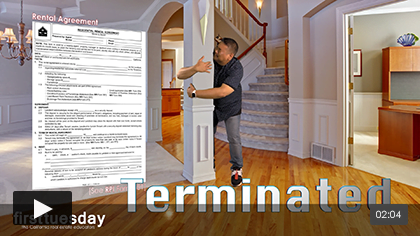After 18 months’ worth of failed attempts by the administration to repair the depressed housing market with tax credits, loan modification programs, government-backed loans, low interest rates and lender refi subsidies, many analysts are proposing a more shocking course of action for the market — let it crash.
The rationale for letting the housing market crash is lower housing prices will immediately come about and that will lure buyers into the market and quickly create the stability the government has tried and failed to produce. The hesitancy by many stems from protection of the rising number of homeowners who will be driven into negative equity conditions and insolvency due to any further drop in their homes’ value.
Those who oppose the “let it crash” idea argue the housing market is now left with only a few segments to be priced down, and another drop would more likely generate a new crisis than just fresh buyers. While the administration would love to take credit for low interest rates as the sole most effective present solution, the Federal Reserve (the Fed) does not take direction from the executive branch, and it is the Fed that controls rates.
More moderate economists are urging the government to address homeowner negative equity, which they feel is one of the major factors at the root of the Great Recession. Millions of underwater homeowners won’t find relief from low prices if they are locked into homes that can’t be sold or have no equity, crash or no crash.
first tuesday take: Lenders now neglect to provide funding for buy-to-let investors who would take on the excess housing. Long term financing is simply not being made available to this group of willing buyers who have the capacity to stimulate sales.
If prices are allowed to crash, speculators will swarm in with cash and buy homes priced far enough “back of the market” to make a profit on the eventual resale to a user to justify the risk of providing liquidity for the lender’s real estate owned (REO) properties. Buyer occupants will not benefit from these cash prices as they are unable to compete. A crash will do nothing to keep owners in their homes.
The rate of short sales is increasing — a sign that upside-down houses are beginning to be cleared out of the market. In regions like Orange County, 58% of all pending sales are short sales and only 8% are REO resales. However, lenders are careful not to engage in too many short sales for fear of incentivizing homeowners to default (as required by the lenders) in hopes of ridding themselves of the debt. If short sales are to be the source of relief for the California housing market, lenders have to begin processing them more efficiently. [For more information regarding short sales, see the August 2010 first tuesday article, Short sales could be shorter.]
Interest rates may be low, but only “nominally” so. The current rate of inflation is 0.6% with the note rate around 4%, a real rate of return of 3.5% to the lender. Their cost of funds from the Fed is lower than inflation. Historically, lenders want a 2.5%-3% spread — the real rate — between the rate of inflation and the note rate. This means they are currently earning excessive profits at the expense of homeowners in these decelerating inflationary times. Until lenders are forced to foreclose or otherwise report their portfolio losses (by mark-to-market accounting), they lack financial incentive to change their habits. [For more information regarding current market rates, see the August 2010 first tuesday Market Charts.]
For buyer occupants to return to the market in full force, the solution boils down to jobs. The government, as employer of last resort, must begin to focus on creating jobs. They have not, but are indirectly getting the message as unemployed and underemployed populations make a lot more noise.
Employed homeowners can purchase homes and retain homeownership. The sale of more homes to employees in newly created jobs will soon eliminate the delinquency problem and increase consumer confidence in one fell swoop, as home prices will quickly stabilize and begin the rise. [For more information regarding unemployment, see the June 2010 first tuesday market chart, Reeling from California unemployment and the August 2010 first tuesday market chart, Jobs move real estate.]
Until more homeowners find employment and lenders clear their portfolios of overvalued mortgages and declare their losses, brokers and agents can encourage consumer confidence through a more enlightened discussion.
Re: “Let the market crash?” from the Economist














Let the market crash. Does anyone still read the Economist, or take it’s propaganda mouthpieces seriously?
The government doesn’t create jobs, private industry does. Extending unemployment benefits is the only direct way the government can efficiently support community income, the ultimate driver of house prices.
Steven,
You are so full of it. Grow up. Almost 50% of the foreclosures in Ca. are for non-owner or second homes. A large portion of the remaining have strategically defaulted, leaving a small minority that can in any way be classified as “victims.”
The vast majority of people in Ca. pay their mortgage, upside down or not. It’s time for those that don’t to either pay up, or move to a house they can actually afford.
Banks will not relinquish their strangle hold around the borrowers necks.
Lenders are delaying the loan mods while they quietly foreclose. We lost a property to CHASE BANK we had an all cash buyer with proof of funds and they dicked us around,the agents lost their commissions and Bank sent some dude to the house and demanded the tenant leave. He said he owned the house and they had to move. He even cussed out the wife of the tenant. The man was at work, Had he heard 5 seconds of the lenders agent bashing his wife, Chase would have had a dead agent to scoop up off the lawn. Yes scoop up! like with a snow shovel and a rake. It is coming, maybe not this time, but wait we will hear about guys like that getting smashed by a tenant. Be warned Agents CHASE is a garbage bank. They lost my business and I have the email proof of them dicking us around. I will NEVER borrow or bank with them again. Their ad says chase what matters, They were talking about YOUR WEALTH. Thats what they are chasing, it is of no benefit to you. and you need to know that. Formerly Washington Mutual/I say no more banking.